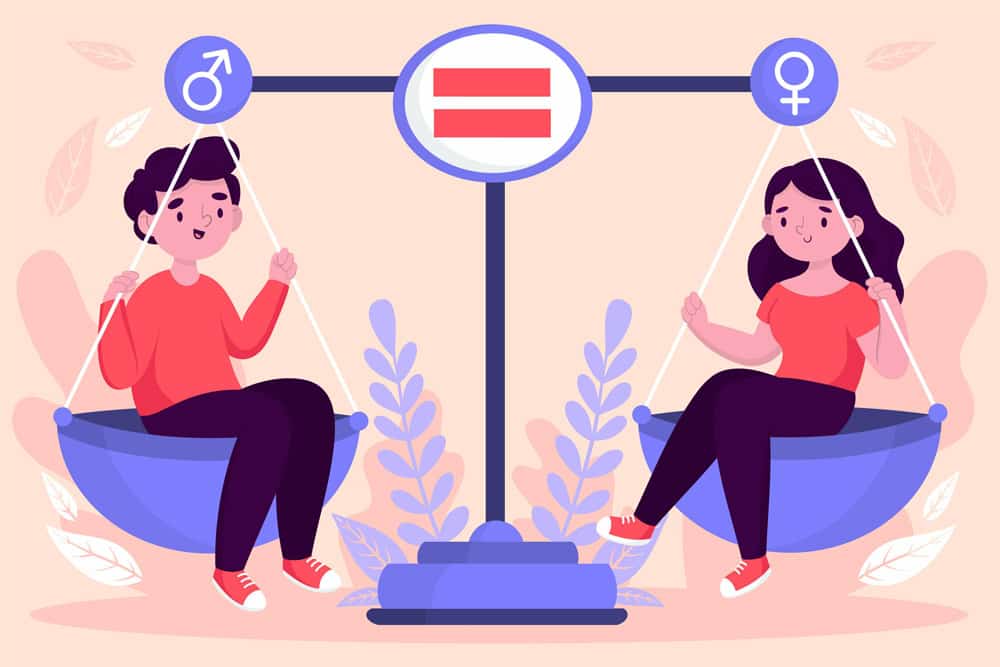Is there gender equality in Spanish classrooms? Are boys and girls treated differently? Are there stereotypes that lead to choosing a career? These are some of the questions answered by this wide selection of articles published on our website, in which experts and teachers analyze all kinds of issues related to equality and education from different perspectives; studies are used to find out real data from Spanish classrooms; and ideas and resources are shared to foster equitable learning in classrooms at all levels. The experts agree: there is gender equality in education between boys and girls, that is, they have access to the same training and opportunities, but there are still aspects in which clear differences are perceived. This is what five teachers and experts in feminism think. A group of researchers from the Gender and ICT group (GenTIC) of the Internet Interdisciplinary Institute (IN3) of the Open University of Catalonia (UOC) has investigated whether there is equality in secondary school classrooms. Among its conclusions, it stands out that more effort, better academic performance and more positive behavior are expected from female students. On the other hand, students are more permissive and less is expected of them, which discourages many from being good academically.
‘Women and education: learning in equality’ was the title of the III EDUCATION 3.0 Meeting, which took place on the occasion of the celebration of International Women’s Day 2020. The participants agreed that educational equality is still far from being a reality and analyzed the main differences.
Yolanda Domínguez: “It is vital to have teachers trained in gender matters”
It will be the new generations who will change the future and achieve a more egalitarian society, but they will need the elders to make their task easier. And although education is essential, it has to go hand in hand with changes in justice, the economy, culture and the media. This is how Yolanda Domínguez, author of the book ‘Maldito Estereotipo’ (Ediciones B), sees the way forward on issues of equality.
DoFemCo: “Teachers unconsciously reproduce gender stereotypes”
The Association of Feminist Teachers for Coeducation (DoFemCo) believes that there is still a long way to go: put an end to the lack of references for girls, the implementation of affective-sexual education or greater teacher training in equality, among Another questions. And, of course, involving families in the process. In the opinion of the editor and writer Iria Marañón, egalitarian education involves changing the activities in the schoolyard, the way knowledge is imparted in class and a change in attitude among the students themselves.

The gender gap at early ages is widely documented. It is corroborated by numerous studies, some published in prestigious international journals such as Science. Its most palpable effect, from an educational perspective, is the enormous disparity in the choice of STEM studies. In 2017, only 25% of women were studying engineering or architecture. A study by the University of Washington concludes that both boys and girls think that they are better in subjects and careers that have to do with programming and robotics and that, in addition, they are much more interested in them. The #NoMoreMatildas movement, initiated by the Association of Women Researchers and Technologists (AMIT) and supported by writers, scientists, institutions and the media, aims to denounce a phenomenon that deprives society of female references in science.
EDUCATION 3.0 Podcast. ‘About the absence of women references in textbooks’
According to a study by the University of Valencia entitled ‘Analysis of the absence of women in ESO manuals: a genealogy of hidden knowledge’, only 7.5% of the references appearing in 115 books analyzed from 19 subjects make Mention of women, and highlights that subjects such as Physics and Chemistry or Social Sciences are the ones that contain fewer female references. The need to have female references has been one of the main demands of coeducation in recent years. And an essential step to achieve this is to promote equality from the textbooks that are used in the classroom at any level and subject. Publishers are aware of this gap and, for some school years, have been working to give women equal prominence to men and ensuring that they are integrated into the educational curriculum from a feminist perspective. Cedec has produced a guide that provides information on how to create non-sexist educational materials. The creation of balanced work teams, projects that promote equality, or the use of inclusive language and images are its main aspects.

It is a figure from the Barometer ‘Youth and Gender. Identities, representations and experiences in a complex social reality’, an investigation by the Reina Sofía Center on Adolescence and Youth of Fad for which they have conducted 1,200 interviews with young people between 15 and 29 years of age. The study also collects the perception of these young people in areas related to gender differences and inequalities, identities and affective experiences. Cristina Fallarás, writer and journalist, does not believe in ‘the importance of educating girls in equality from the school stage’. She believes in educating boys in feminism and in passing on to girls the heritage of decades of struggle. This is how she applies it to her family: “There is no equality in the development of my son and my daughter. He is educated in respect and she in awareness of sex and self-defense, ”she explains. Books, films and series, web pages, mobile applications, board games… All these resources and many more help to work on different subjects from the point of view of gender equality, as well as to deal with related topics in a transversal way. Many educational centers undertake varied projects with which to educate and make their students reflect on the importance of this issue. These are some of the most interesting published on our website.

